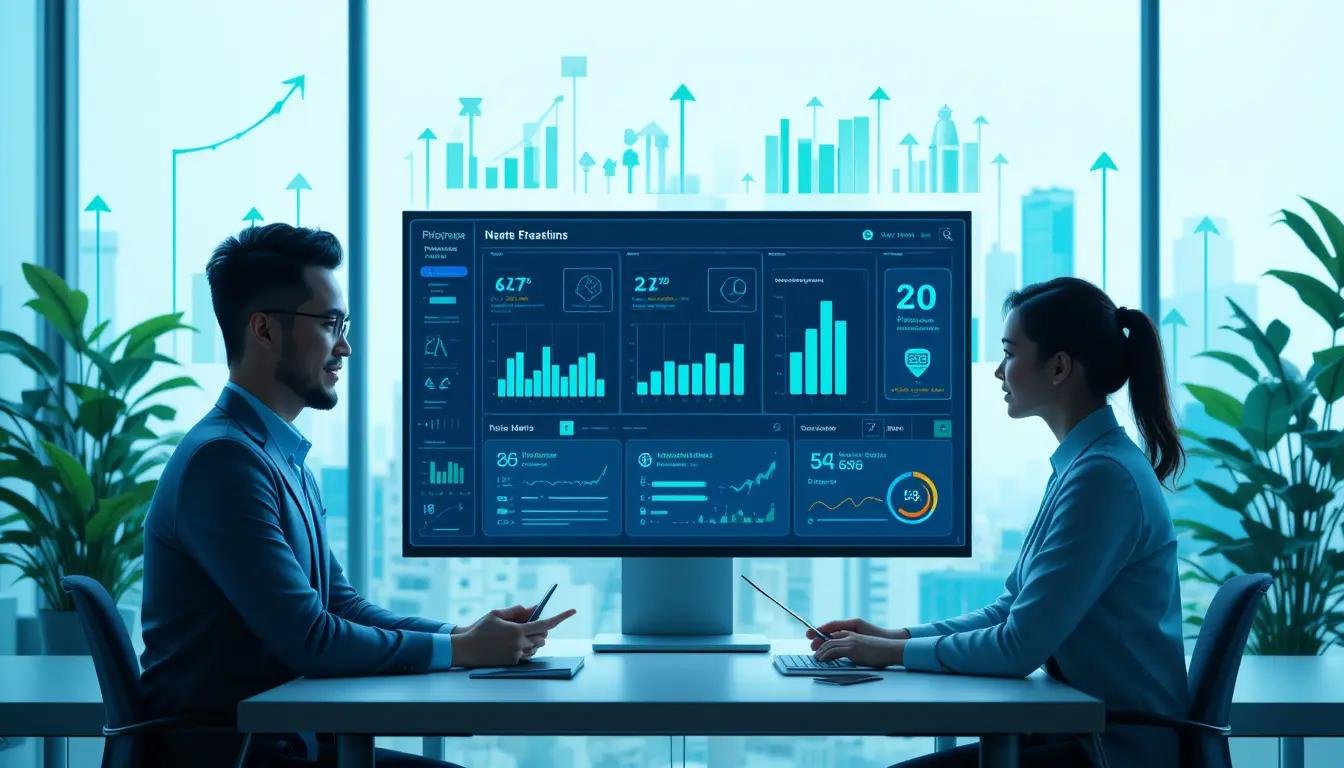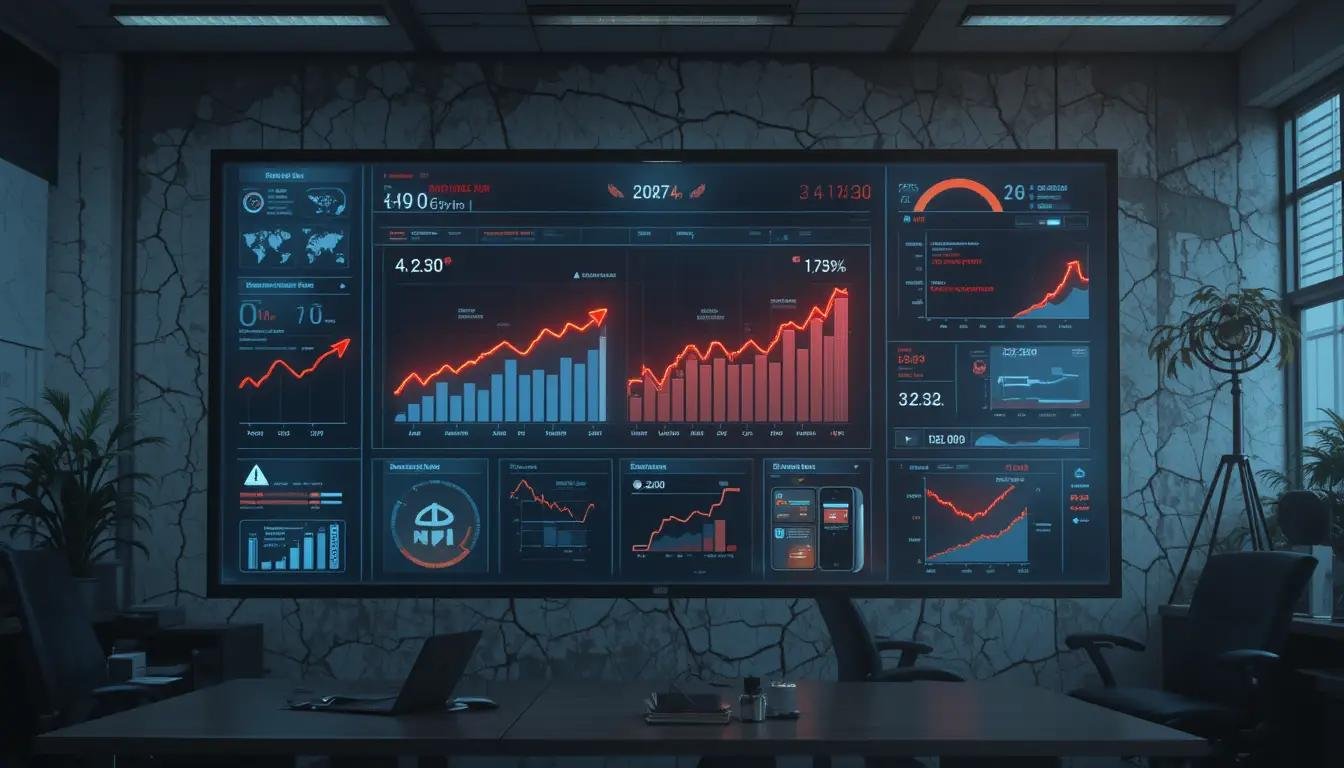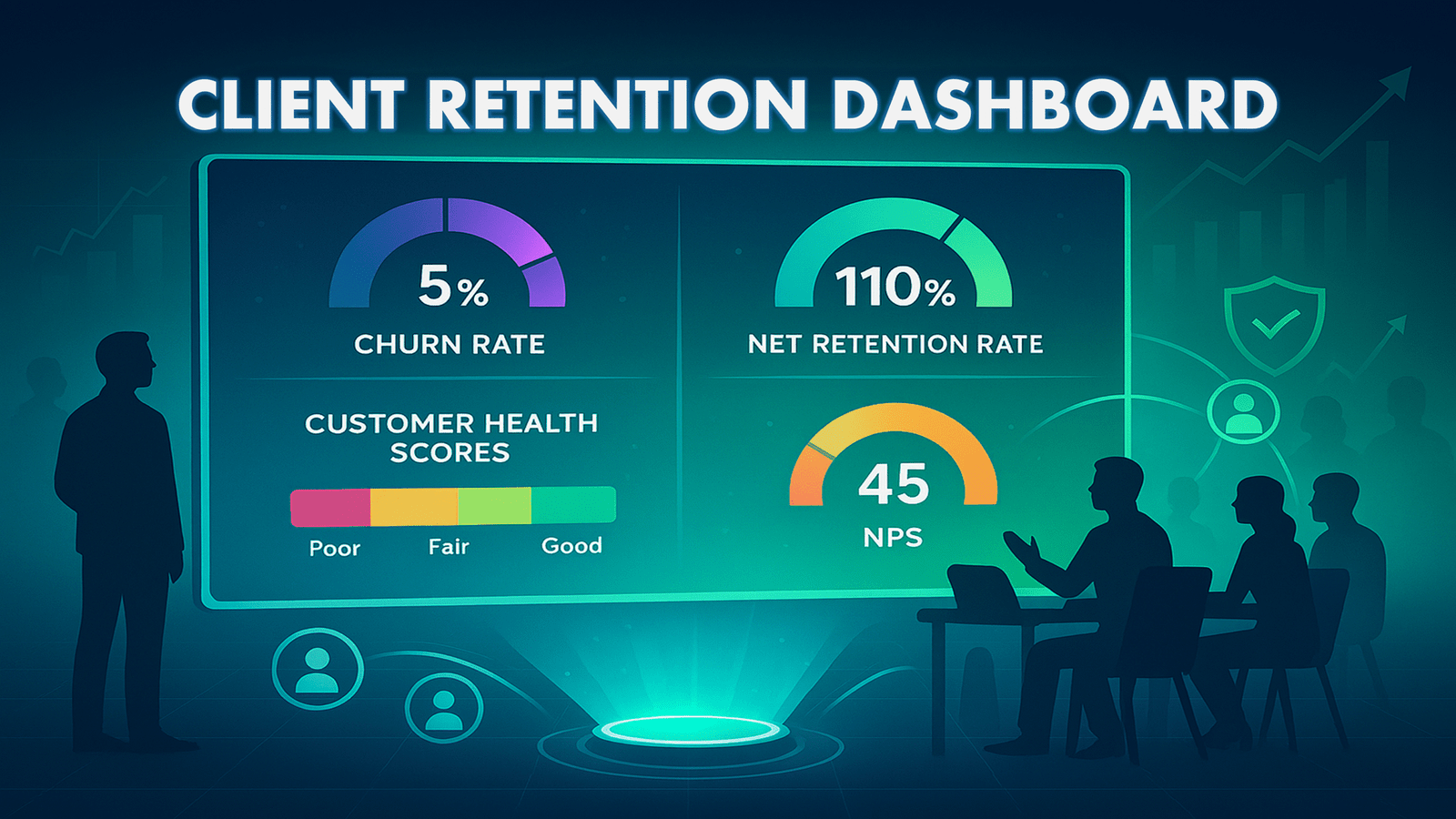Now Reading: Effective Feedback Sessions: A Guide to Drive Performance & Team Growth
-
01
Effective Feedback Sessions: A Guide to Drive Performance & Team Growth

Effective Feedback Sessions: A Guide to Drive Performance & Team Growth
Did you know that employees who receive regular feedback sessions are three times more likely to perform their work well?
Managers who combine clear performance goals with consistent feedback see most important improvements in individual performance. Many leaders still struggle to become skilled at effective feedback techniques. This remains a vital part of driving team success.
We created this complete guide to feedback sessions to help you succeed. Your team’s productivity will improve with better feedback practices. You can promote open communication and build an environment of continuous improvement. The guide shows you exactly how to structure and deliver feedback that gets results.
Want to change your feedback sessions into powerful drivers of performance and growth? Let’s take a closer look.
Building a Feedback System
Employees who receive meaningful feedback weekly show full involvement with their work26, according to 80% of employees. This important effect shows why systematic feedback matters.
Defining feedback frequency
Managers who provide daily feedback help their employees perform 3.6 times better compared to annual reviews26. Quick feedback works best right after an action because people remember recent experiences better26. Your team needs feedback several times per week that focuses on specific actions and outcomes.
Creating feedback channels
A reliable feedback system needs multiple channels to capture different types of input. These channels should line up with your team’s communication preferences. Here are the feedback methods that work best:
- Face-to-face meetings for in-depth discussions
- Digital platforms for quick, daily feedback
- Anonymous suggestion systems for sensitive topics
- Regular pulse surveys for team-wide insights
- Peer-to-peer feedback sessions
Setting up documentation
Good documentation guides improvements that you can act on. Your documentation system should include clear Standard Operating Procedures (SOPs) that outline commitments, timeframes, and individual roles27. Mobile data collection tools can help standardize feedback data and let you analyze trends quickly27.
Your documentation should collect structured data that enables quick decision-making27. You should visualize your data to show trends and highlight urgent concerns. This helps managers track progress and show how changes affect the team.
Note that you should explain any changes based on feedback and reasons why certain actions might not be possible27. This openness builds trust and encourages team members to keep participating in the feedback process.
Training Your Team
Leadership shapes a feedback culture where team members can openly share and receive constructive input3. You need to be well-laid-out and combine theory with practice to train your team in feedback skills.
Teaching feedback skills
The SBI (Situation, Behavior, Impact) feedback model is the life-blood of effective feedback training4. Your original focus should help team members clarify situations, describe specific behaviors, and explain how those behaviors affect others. This helps motivate recipients to improve their performance.
Your team should know that 60% of employees prefer daily or weekly feedback, and this number jumps to 72% for those under 305. So, training must stress the value of regular, timely feedback.
We focused on teaching teams to look at behaviors instead of personality traits6. This creates a more constructive atmosphere and leads to fewer defensive responses. Here’s what you need to cover:
- Using specific, applicable language
- Keeping a friendly and respectful tone
- Combining honesty with empathy
- Following up after feedback sessions
Practice exercises
The quickest way to strengthen these skills is through structured feedback exercises. The “Start, Stop, Continue” exercise works well7. Team members learn to give focused feedback by identifying:
- Behaviors others should start doing
- Actions that should stop
- Practices that should continue
The “Current Strongest Impression” exercise shines with newer teams8. This activity builds trust and openness while team members learn about themselves and others7.
Remote teams can use virtual feedback tools and asynchronous methods for continuous skill development. You might want to try anonymous surveys since team members don’t always feel ready to give direct feedback9.
Note that openness builds trust, and trust creates more openness7. Your team will develop stronger feedback skills and create a more shared work environment through regular practice sessions.
Implementing Regular Check-ins
Regular check-ins are the foundations of successful performance management. Studies show that employees who receive consistent feedback are three times more engaged in their work10.
Daily quick feedback
Daily check-ins create an ongoing dialog between managers and team members about immediate performance insights. These brief sessions help address current tasks and challenges that need quick adjustments. Research shows that feedback delivered “in the moment” helps employees the most11.
Weekly performance discussions
One-on-one meetings each week provide structured conversations about ongoing projects and personal development. These 30-60 minute sessions cover both achievements and areas that need improvement12. Research reveals that nearly 60% of employees prefer feedback weekly13.
Monthly reviews
Monthly reviews give a complete picture of performance trends and goal progress. These 1-2 hour sessions14 should include:
- Analysis of financial and operational metrics
- Review of previous month’s achievements
- Goal setting and adjustment
- Action plan development
- Resource allocation assessment
Monthly reviews work best when they start with clear performance data15. Managers should gather relevant metrics and documentation beforehand. Organizations that conduct regular monthly reviews have seen up to 25% increase in customer satisfaction15.
Successful check-ins need consistent scheduling without last-minute cancelations16. Managers should document discussion points and action items to track progress and ensure accountability17.
Note that check-ins build clear communication channels between managers and their teams17. This three-tiered approach – daily, weekly, and monthly feedback – creates a complete performance management system that stimulates continuous improvement and team growth.
Measuring Feedback Effectiveness
Organizations need a systematic approach to track both quantitative and qualitative outcomes when measuring feedback effectiveness. Teams that use structured feedback assessments see a 30% improvement in employee performance18.
Key performance indicators
Five vital KPIs determine the success of feedback sessions:
- Participation Rate: Shows the percentage of active participation in feedback processes2
- Completion Rate: Tracks submitted feedback forms and assessments2
- Response Time: Shows feedback delivery speed after assessment2
- Feedback Quality: Reveals how constructive and actionable the feedback is2
- Implementation Rate: Shows the percentage of feedback that leads to behavioral changes2
These metrics help organizations spot trends and make informed decisions to improve their feedback processes. Companies can then fine-tune their approach based on measured outcomes, which ensures better organizational performance2.
Employee satisfaction surveys
Surveys work as powerful tools that gather both quantitative data and qualitative feedback through targeted questions19. Regular surveys help organizations spot areas that need improvement, including compensation, work environment, and management performance19.
Surveys must guarantee anonymity to get honest feedback19. This creates psychological safety and lets employees share real concerns about workplace culture, leadership, and well-being1.
Survey success depends on good design and execution. Organizations should collect structured data that leads to quick decision-making20. A full review of survey responses reveals patterns and insights that shape targeted action plans19.
Organizations should follow these steps to keep surveys effective:
- Design surveys that are short but detailed19
- Include both open-ended and Likert scale questions to get a full picture19
- Schedule regular survey intervals for consistent monitoring19
- Look at trends across departments to find specific areas for improvement1
The combination of these measurement approaches creates a detailed feedback evaluation system that optimizes continuous improvement and team development. Leaders can adjust their feedback strategies by analyzing these metrics regularly to maximize their effect on employee performance and growth.
Adapting to Remote Feedback
Remote work has reshaped how teams exchange feedback. Studies show that 71% of the US workforce will be fully remote or hybrid by 202321. This transformation just needs a fresh approach to giving and receiving feedback.
Virtual feedback tools
The right digital tools are the foundations of remote feedback that works. Project management platforms and specialized feedback software have increased employee efficiency by 14.9%22. We focused on tools that are a great way to get:
- Video conferencing to have face-to-face feedback sessions
- Project management software to give task-specific feedback
- Specialized platforms to conduct performance reviews
- Instant messaging to share quick, informal feedback
- Collaborative document platforms to review written work
Teams using feedback software work 25% faster in project delivery23. Investing in the right tools is vital to maintain team performance.
Asynchronous feedback methods
Asynchronous communication has become a powerful solution to distributed teams. Knowledge workers spend an average of 3 hours and 43 minutes daily communicating through various channels21. A well-laid-out asynchronous feedback method is everything in this setup.
Start by setting clear documentation processes for feedback exchanges. Create dedicated channels for specific types of feedback. Set realistic response timeframes that work across different time zones.
Asynchronous brainstorming lets team members work at their own pace21. Studies show that asynchronous work benefits women and people from marginalized communities because it lets them contribute without interruption21.
Building connection remotely
Remote work offers flexibility, but 43% of remote workers feel lonely and disconnected22. Notwithstanding that, organizations can strengthen team bonds through intentional connection-building strategies.
Psychological safety is vital for remote feedback to work. Trust-based relationships lead to faster feedback adoption and improved team performance24. To encourage such connections:
- Use the first five minutes of virtual meetings to connect personally25
- Schedule regular virtual coffee breaks or informal catch-ups
- Run structured feedback sessions that mix professional and personal growth discussions
- Create digital spaces where teams can interact casually
Organizations using these strategies report 20% higher employee satisfaction22. Teams that maintain regular virtual connections show higher involvement levels and better project completion rates.
Note that building trust in a remote environment takes intentional effort. Strong relationships can develop asynchronously, but successful teams combine digital connection strategies with occasional in-person meetings when possible21.
Conclusion
Regular feedback sessions are the life-blood of team growth and organizational success. Teams that receive structured feedback consistently perform better than those without systematic feedback processes.
Strong feedback systems need multiple carefully crafted elements. These range from proper channels and documentation to team members trained in core feedback skills. A rhythm of daily check-ins, weekly discussions, and monthly reviews keeps teams arranged and driven.
Targeted KPIs measure success and help refine these processes. Employee satisfaction surveys teach us what we need to improve continuously. Remote work creates its own set of challenges. The right tools and strategies to build connections ensure feedback stays meaningful for distributed teams.
Great feedback cultures thrive when teams put in consistent effort and stay dedicated to improvement. Teams that welcome regular, constructive feedback build environments where everyone grows, learns, and delivers their best work.
FAQs
Q1. How often should feedback sessions be conducted? Feedback should be provided regularly, with daily quick check-ins, weekly performance discussions, and monthly comprehensive reviews. This frequency helps maintain continuous dialog and allows for timely course corrections.
Q2. What are some effective methods for delivering feedback remotely? Remote feedback can be delivered through video conferencing for face-to-face sessions, project management software for task-specific feedback, and instant messaging for quick, informal input. Asynchronous methods like dedicated feedback channels and collaborative document platforms are also effective.
Q3. How can managers measure the effectiveness of their feedback sessions? Managers can measure feedback effectiveness by tracking key performance indicators such as participation rate, completion rate, response time, feedback quality, and implementation rate. Employee satisfaction surveys also provide valuable insights into the impact of feedback processes.
Q4. What are the essential elements of constructive feedback? Constructive feedback should be specific, actionable, and focused on behaviors rather than personality traits. It should be delivered in a timely manner, maintain a respectful tone, and combine honesty with empathy. Following up after feedback sessions is also crucial.
Q5. How can teams build stronger connections while working remotely? Teams can strengthen remote connections by dedicating time for personal interactions during virtual meetings, scheduling regular informal catch-ups, implementing structured feedback sessions that address both professional and personal growth, and creating digital spaces for casual team interaction.
References
[1] – https://www.contactmonkey.com/blog/how-to-measure-employee-feedback
[2] – https://surveyconnect.com/faqs-about-360-degree-feedback/what-are-the-key-metrics-for-measuring-feedback-system/
[3] – https://insight.ieeeusa.org/articles/how-to-give-and-receive-constructive-feedback-at-work/
[4] – https://www.ccl.org/leadership-solutions/leadership-topics/giving-effective-feedback-that-works/
[5] – https://www.proprofsproject.com/blog/improve-team-communication/
[6] – https://crestcom.com/blog/2023/10/06/the-dos-donts-of-giving-and-receiving-effective-feedback/
[7] – https://www.sessionlab.com/library/feedback
[8] – https://managebetter.com/blog/try-these-feedback-exercises-with-your-team
[9] – https://asana.com/resources/team-communication
[10] – https://home.workstory.team/post/why-regular-check-ins-are-key-to-effective-performance-management
[11] – https://www.linkedin.com/pulse/how-have-better-performance-conversations-michelle-gibbings
[12] – https://www.muchskills.com/playbooks/check-ins
[13] – https://www.mentimeter.com/blog/meetings/feedback-sessions
[14] – https://www.liveplan.com/blog/planning/how-to-run-a-monthly-plan-review-meeting?srsltid=AfmBOoqY70kP3TlBfGa0DlnjGiyp3GYw6zfNUd0PLvWgwTZi4fesVAeb
[15] – https://blog.kainexus.com/how-to-conduct-high-value-monthly-business-reviews-for-continuous-improvement
[16] – https://www.linkedin.com/pulse/how-conduct-effective-regular-check-in-10-steps
[17] – https://www.peoplegoal.com/resources/webcasts/check-ins-done-right
[18] – https://psico-smart.com/en/blogs/blog-measuring-the-effectiveness-of-continuous-feedback-in-employee-development-programs-175769
[19] – https://www.surveymonkey.com/mp/employee-satisfaction-surveys/
[20] – https://www.ennova.com/en/resources/blog/ex/how-to-work-with-the-results-from-your-employee-satisfaction-survey
[21] – https://www.atlassian.com/blog/communication/asynchronous-communication-for-distributed-teams
[22] – https://vorecol.com/blogs/blog-the-impact-of-remote-work-on-feedback-processes-37748
[23] – https://psico-smart.com/en/blogs/blog-how-to-use-asynchronous-feedback-loops-to-improve-remote-team-performance-183539
[24] – https://www.asyncagile.org/perspectives/giving-feedback-asynchronously
[25] – https://sloanreview.mit.edu/article/building-human-connection-in-a-remote-world/
[26] – https://www.gallup.com/workplace/357764/fast-feedback-fuels-performance.aspx
[27] – https://www.unhcr.org/innovation/10-steps-to-setting-up-an-effective-feedback-mechanism/















